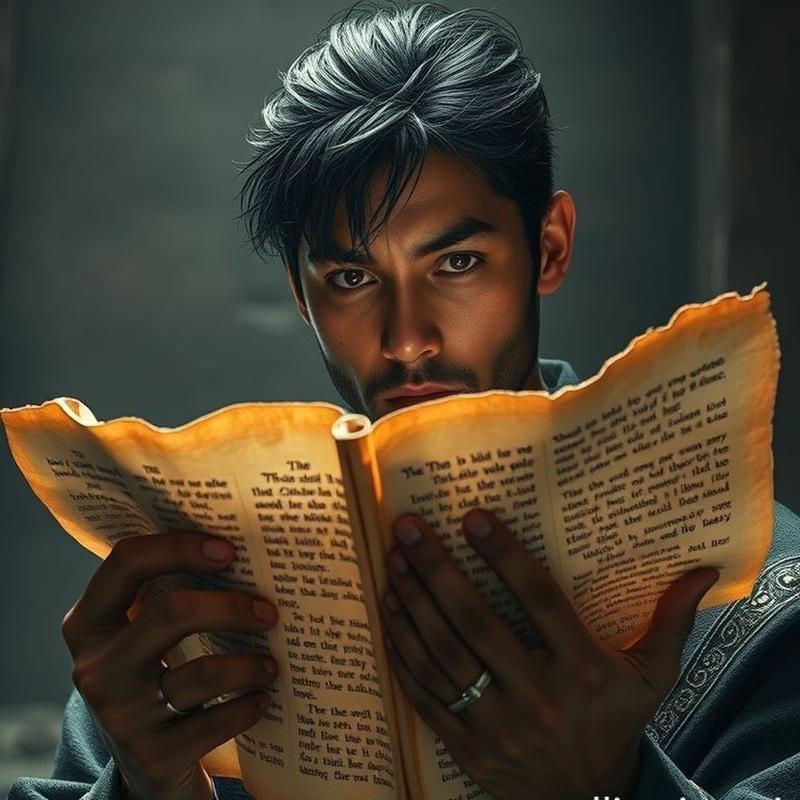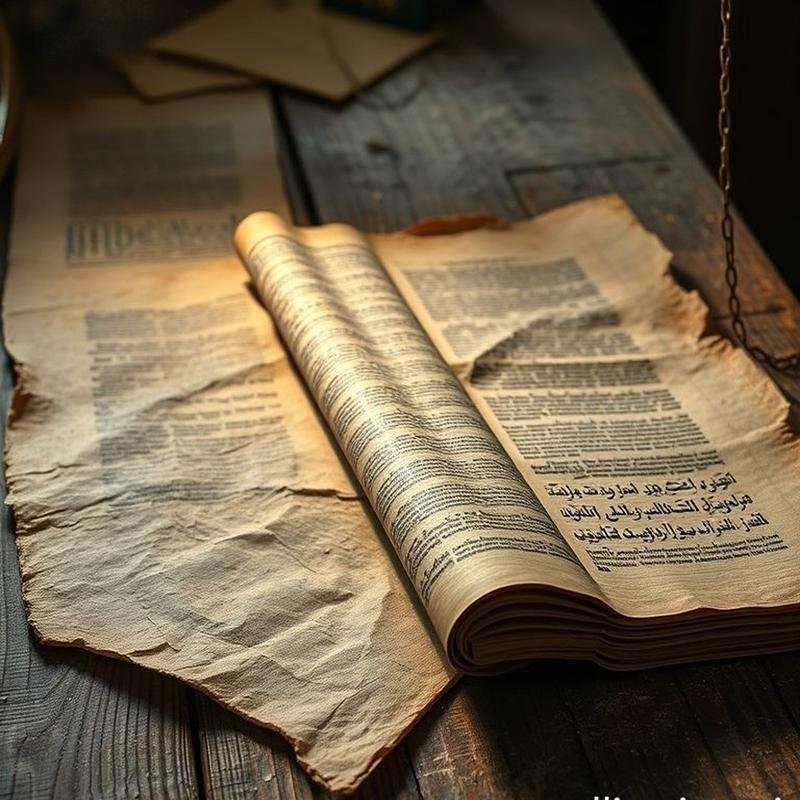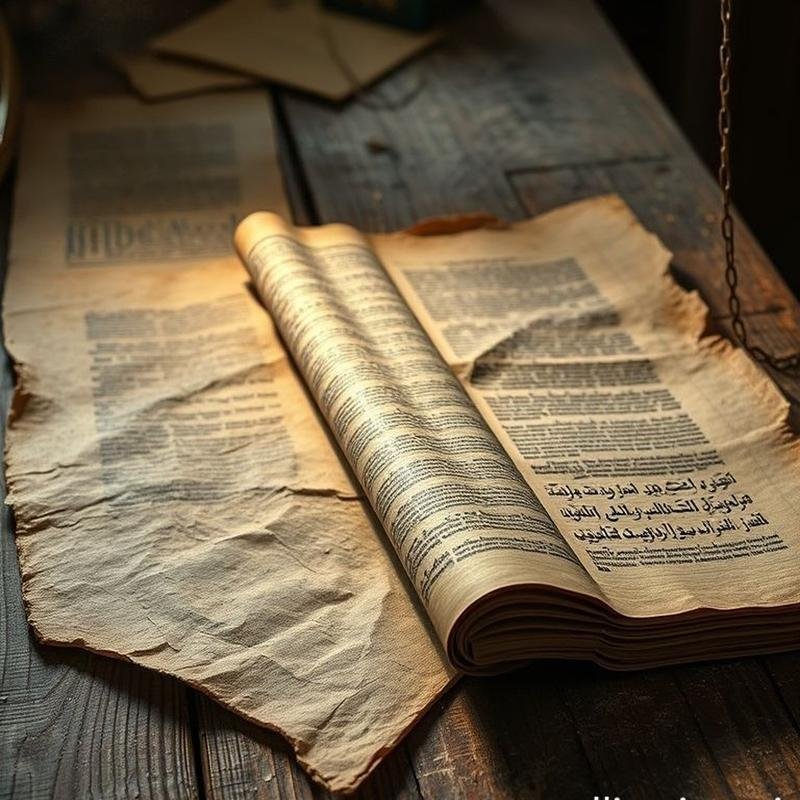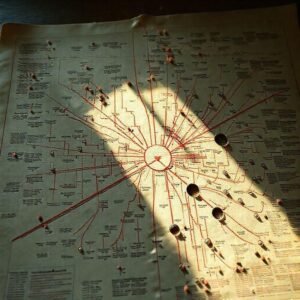The Dead Sea Scrolls: Secrets that are shaking the religious world!

Dead Sea Scrolls: Unveiling Religious Secrets
What if I told you that the sacred texts upon which civilizations are built offer only a glimpse into a broader, more complex narrative? A story lies buried in the desert sands and within its dark caves, awaiting rediscovery. In this episode, we embark on a journey through time, where faith and discovery intersect, and the secrets of the past challenge the very foundations of our understanding of religion. We will unveil the Dead Sea Scrolls, fragile parchments that have reshaped religious history, and explore the mysteries that remain dormant between their faded lines, mysteries that may challenge your deeply held beliefs.
Are you prepared to confront the truth in its entirety?
Before we delve into the compelling evidence, share your expectations in the comments below. To ensure you don’t miss an episode of this fascinating documentary series, subscribe now and activate the notification bell.
The Accidental Discovery
Before our eyes are immersed in the sanctity of these texts, let us journey back in time to the humble beginning, the moment of unexpected discovery. In the harsh winter of 1946 or 1947, as desert sands swept across the landscape, Jum’a Muhammad Khalil, a Bedouin shepherd from the Ta’amireh tribe, was searching for a lost sheep. His search led him to a rocky hollow, a mysterious opening in the heart of Khirbet Qumran.
Little did Jum’a know that a simple stone he threw into that hollow would alter the course of history. A strange sound, a muffled echo reverberating in the darkness, piqued his curiosity, compelling him to explore the cave. There, he found clay jars containing priceless treasures: ancient leather and papyrus scrolls.
Unaware of their true value, Jum’a sold the manuscripts to an antiquities dealer in Bethlehem, Khalil Iskander Shahin, for a meager sum. But Shahin, known as Kando, realized that these were not mere artifacts, but a window into the past.
A Glimpse into the Past
Kando understood that these scrolls were not just ordinary relics, but windows overlooking a forgotten past. Within the folds of these time-worn parchments lay treasures unseen by the world for millennia: nearly 900 distinct documents, forming a captivating mosaic of religious, legal, and literary works.
Imagine, among these fragile fragments, are portions of nearly every book of the Old Testament, with the exception of the Book of Esther. Scriptural texts constitute thirty percent of these manuscripts, a testament to the evolution of the Bible itself. Yet, there was more – apocryphal texts such as the Book of Enoch and Jubilees, tales and legends that did not find a place in the accepted Bible, but cast long shadows on the beliefs of that era.
Then there were the sectarian writings, such as the Community Rule and the Damascus Document, insights from the Qumran community, revealing their unique rituals, beliefs, internal struggles, and worldview. And even the enigmatic Copper Scroll, a map to hidden treasures, promises fortunes awaiting discovery.
Let us not forget the Aramaic portions of the Book of Daniel, a testament to the importance of that language in religious literature. Spanning from the 3rd century BCE to 70 CE, these manuscripts bridge a pivotal era, a time capsule offering a glimpse into a world long vanished. They are not merely texts, but echoes of the past, testimonies to human faith, struggles, and aspirations: priceless treasures, reshaping our understanding of religious history.
The Qumran Community
But have the discoveries truly ended? As we delve deeper into these ancient texts, we transition to a community that may have played a pivotal role in preserving these precious treasures: the Qumran community.
These hermits, believed to belong to the ascetic Essene sect, are thought to have chosen this barren desert region as a sanctuary. Far from the bustle of Jerusalem, they established a unique community, governed by strict rules and radical beliefs. The Roman historian Pliny the Elder describes them as “living without women, renouncing all sexual pleasure, without money, living only with palm trees.”
But was their life merely one of constant asceticism and austerity? The Dead Sea Scrolls reveal another intriguing side: a community deeply engaged in the study and interpretation of the Law, passionately seeking hidden meanings and symbols pointing to the future. The Community Rule and the War Scroll of the Sons of Light Against the Sons of Darkness paint a vivid picture of a remarkably organized communal life, frequent purification rituals, shared meals, and a firm belief in the imminent end of the world and a decisive battle between the forces of good and evil.
The remains of ritual baths discovered in Qumran provide evidence of a community engrossed in the arduous pursuit of spiritual and physical purity. But what about the sacred texts themselves? How have these manuscripts reshaped our understanding of the Bible?
Reshaping Biblical Studies
The discovery of the Dead Sea Scrolls was a watershed moment that revolutionized biblical studies. Scholars were confronted with older and more diverse versions of texts they had previously considered fixed and unified. The manuscripts revealed substantial textual differences between the oldest known versions of the Hebrew Bible and the Masoretic Text, upon which studies had been based for centuries.
The manuscripts demonstrated that some books, such as the Book of Samuel, were in a state of constant evolution, with different versions including missing parts or additions not found in the standard Masoretic Text. This discovery raised fundamental questions about the accuracy of the text we have today, and whether it truly represents the divine word as it was revealed.
The significance of the manuscripts extended beyond textual analysis, providing new and surprising insights into the evolution of Jewish doctrines and religious practices during that turbulent period. The manuscripts contained texts not found in the Hebrew Bible, such as the Book of Enoch and the Book of Jubilees, raising fundamental questions about the canonicity of these texts in ancient Jewish communities.
The manuscripts also revealed the existence of divergent interpretations of biblical texts, including allegorical and esoteric interpretations, indicating the diversity and richness of religious thought in that era. These interpretations offer a window into the minds and hearts of those who lived in a time much like our own, a time of constant search for meaning in a world rife with turmoil. Amid this trove of knowledge, secrets remain unsolved and mysteries await revelation.
Unsolved Mysteries
Who is the Teacher of Righteousness mentioned in the Damascus Document? Was he a historical figure who led the Qumran community, or a symbolic representation of an ideal? And where does the Copper Scroll lead with its alleged treasures? Are they detailed maps of undiscovered locations, or symbolic representations of another form of knowledge?
Then, there’s the complex relationship between the Qumran community and the Essenes: were they two facets of the same group, or distinct entities sharing certain beliefs? And what about the War of the Sons of Light against the Sons of Darkness? Was it a real armed conflict, or a symbolic representation of the eternal struggle between good and evil? Questions abound, and answers remain elusive.
Most importantly, the work is ongoing. Small fragments of the manuscripts have not been fully assembled or understood, small shards that may hold keys to a deeper understanding of that era. And why did the manuscripts suddenly disappear into the caves? Was it to protect them from Roman invaders, or is there a hidden religious ritual behind it? Time alone may reveal the truth.
Preservation and Restoration
Amid this torrent of questions and countless possibilities, preserving this tangible and intangible heritage remains an urgent imperative. These fragile manuscripts, which have defied the ravages of time and miraculously survived, deserve our utmost care. From here, another tale emerges: the story of restoring these precious treasures and presenting them to the world.
In 2008, an ambitious project was launched to digitize the Dead Sea Scrolls, with the goal of creating an ultra-high-resolution digital archive, serving as an accessible resource for researchers and the public alike. Thanks to advanced imaging technologies, including multispectral imaging, faded texts were revealed, words that had long been obscured, illuminating minds anew.
But the mission was not without its challenges. Restoring the delicate parchments requires specialized materials and techniques: ultra-thin Japanese paper and reversible vegetable glue are essential tools in the restoration process. The original manuscripts are now housed in a sealed and controlled environment in the Israel Museum, where heat, humidity, and lighting are precisely regulated in an effort to slow deterioration.
Imagine the challenge of assembling thousands of small fragments, scattered pieces of a vast puzzle, a task requiring years of dedicated work and unwavering patience. The Israel Antiquities Authority estimates that more than 900 distinct manuscripts were found in the Qumran caves, and today, a dedicated website serves as a free gateway to this information. But how has the impact of the Dead Sea Scrolls transcended the boundaries of academia to permeate popular culture, leaving its mark on cinema, literature, and even video games? How have these ancient texts transformed from archaeological treasures into compelling narrative elements?
The Scrolls in Popular Culture
In Cecil B. DeMille’s film *The Ten Commandments*, the manuscripts were not merely a historical reference lending credibility to the events, but a powerful symbol of the relentless search for religious truth. In contrast, Dan Brown’s novel *The Da Vinci Code* inspired plots of hidden conspiracies, imagining the existence of secret information buried within their lines, raising questions about the secrets that these texts might truly conceal.
And it did not stop there. In the film *Indiana Jones and the Kingdom of the Crystal Skull*, the manuscripts appeared as a secondary element, but ignited curiosity in a new generation, while the series *The X-Files* exploited their surrounding mystery in an intricate plot of conspiracy theories and government secrets, thus solid
Video









